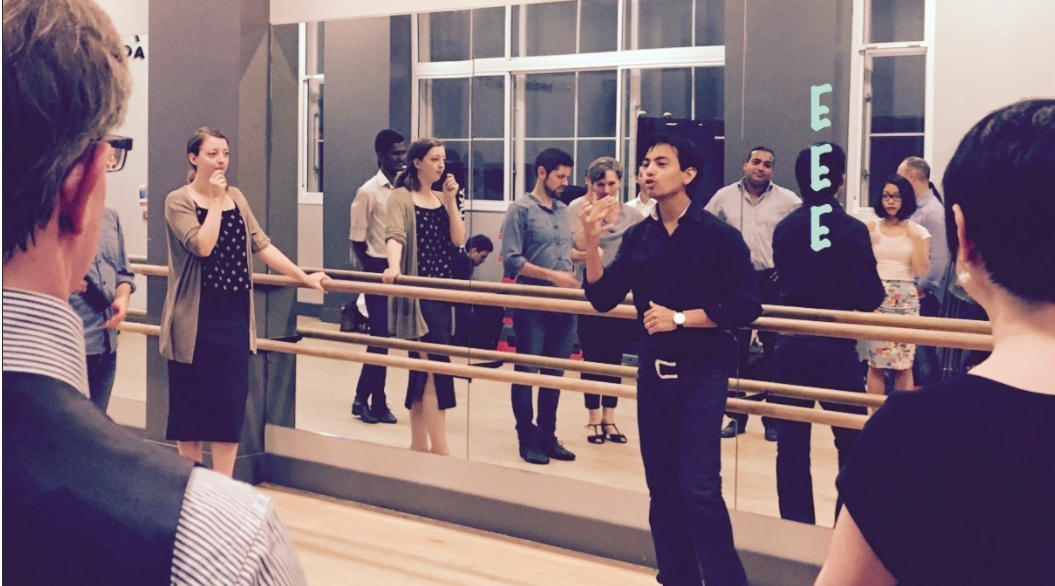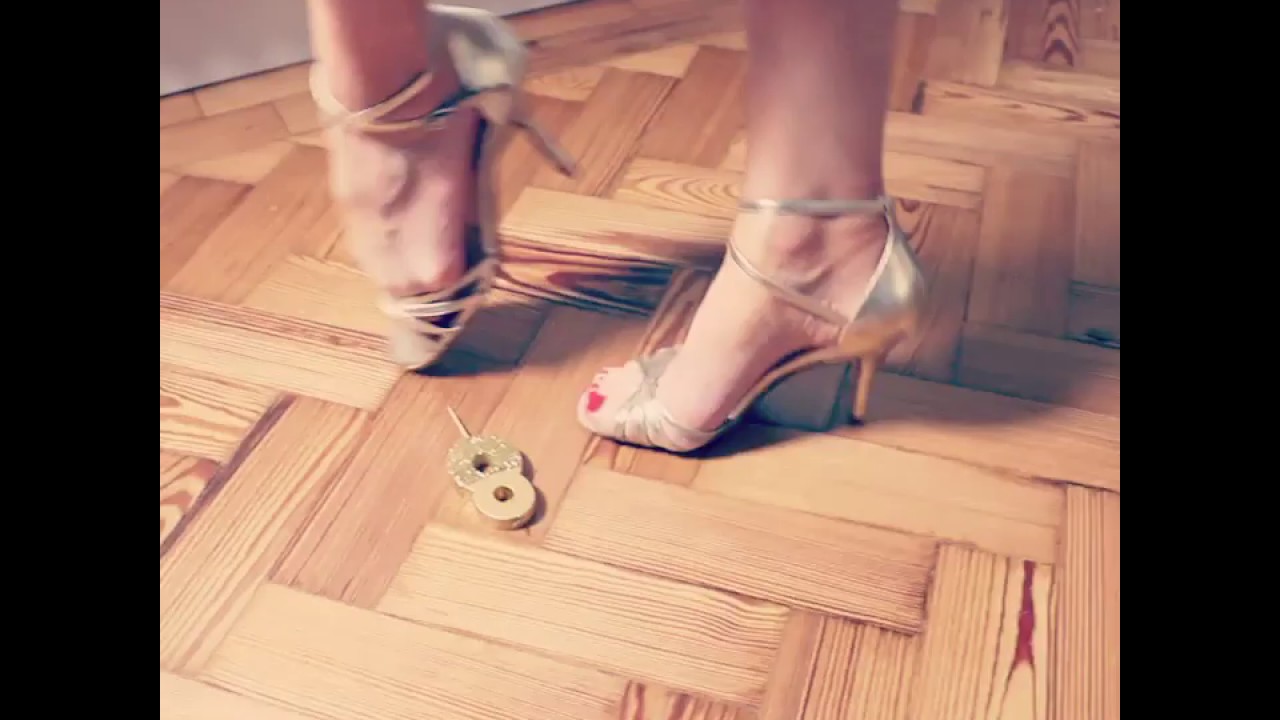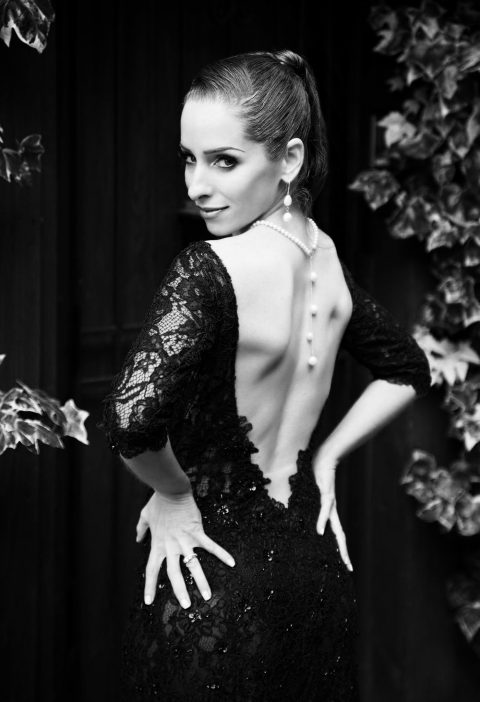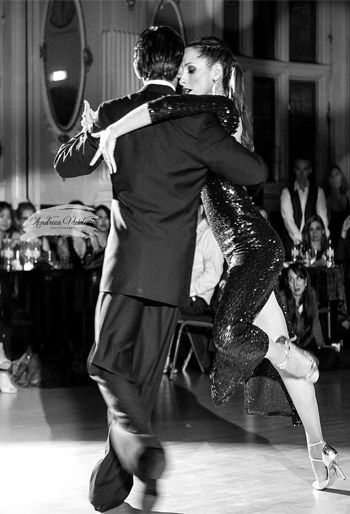There are many things I love about tango: the spine-tingling music, the warm embrace, the feeling of escape. And then there are adornments and for me they are an essential part this wonderful story.
Often referred to as decorations, embellishments or “adornos” (from the Spanish), what are adornments? How, when and where do I use them?
And finally should I use them?
What Are They?
Look up the word “adornment” in the dictionary and you’ll find quite a simple definition:
adornment[uh-dawrn-muh nt]
noun
something that adds attractiveness
This doesn’t help much help if you’re trying to explain to someone what a tango adornment is! So I’ll take the plunge and make my own attempt at a tango definition:
tango adornment[uh-dawrn-muh nt]
noun
a movement executed by either the leader or follower in tango, independent of the lead, for self-expression, to interpret the music, and to play and connect with your partner
The defining feature of an adornment is that it is not part of the lead in tango. Accordingly, either the leader or follower can choose to do an adornment at any time he/she feels like it, provided of course it isn’t detrimental to the connection with their partner.
Why Do Them?
Tango is unique for the feeling of connection it gives us with our partner. A lot of emphasis is placed on this when we learn. And rightly so because it is a very special thing and without it, the heart of tango is lost.
But tango is not exclusively about connection. It is a dance. Every human being is born with an instinct to move when they hear music. Also important is how we choose to move and express ourselves in tango and that we exist in the dance as individuals, not only as somebody’s partner.
In particular, adornments for followers – who do not have control over any of the movements in the dance – create a unique opportunity to be creative and show personality. It is mainly through adornments that the follower can contribute to musicality to the dance.
However it’s important to point out that adornments don’t necessarily break or detract from connection. In fact they should enhance it. Adornments allow the follower to express to their partners how they are feeling and how they hear the music, and in this way create more of a two-way “conversation”.
How Do We Learn Them?
When I first started to learn tango, I was told by several teachers that adornments could not be taught. I was told that they had to be felt, that they just somehow “happened” once you’d been dancing tango for many years. That was the end of the conversation.
I felt a little bit doubtful about this. Everyone learns in different ways, but I felt that if I wasn’t shown how to do them, I would be waiting a liftetime before they just spontaneously came to me! Besides, adornments are simply movements. What was it that couldn’t be taught about them?
It is true adornments are just movements and of course they can be taught. But what perhaps is more difficult to teach is how to use them creatively and expressively.
But is this unique to adornments?
Take the leader’s role, for example. He will be taught the “tools” – steps, techniques, principles – but then it is up to him to make the dance his own, by listening to the music and working creatively. And this stage comes, of course, after the learning of the tools.
It may not be possible to teach creativity in the most conventional sense, but teachers can definitely find ways to guide and inspire their students.
In our classes, we try first to explain the technique of a movement and then we try to help our students to use it creatively. I’m always excited when I see my students using adornments I’ve taught them musically or in ways I’ve never myself used them. That’s when I know my job is done!
The Challenge
One of the greatest challenges of adornments is spotting the right moment to do them, without interrupting the dance or kicking yourself/your partner in the shins (unfortunately, we’ve all been there!)
This is more difficult for the follower than for the leader as she doesn’t know in any one moment what the leader will do next. The follower needs to be able to judge two things:
1) where to add an adornment and,
2) whether there is time for the adornment.
I often jokingly tell my students that the time they have to do an adornment is roughly the time it takes to think: “Shall I do it?”.
The time we have is fleeting and we need to be decisive!
Three Stages to Learning Adornments
1) Master the Movement
It is a significantly more difficult to do an adornment during a tango if you haven’t yet mastered the movement itself. And you may be biting off more than you can chew.
Take time on your own – either in a class or at home (or in the supermarket, why not!) to practice the movement. Repeat it so that your body is very familiar with it. Producing it in the right place and at the right time will now become a whole lot easier!
2) Put It into Practice
A lot of followers say that they find it difficult to know where to do adornments. The best way to get started is – like most things in life – step by step.
Let’s say, for example, you are practicing a figure in a class and that figure starts with the leader’s side step to the left. Tell yourself that for just one class you will practice a certain adornment every time you feel the leader take that side step. Yes, it will be overkill but overkill is fine when you’re in a class. You will tone it down in the milonga and it’s all about practice, practice, practice!
You may even get to the point that the adornment after the side step becomes so automatic for you, that you have to make an effort NOT to do it!
3) Feel It!
The first two stages may appear little mechanical but it is only once we’ve incorporated a movement into your body that we can start using it to express what we feel and what you hear in the music. The movement will start to “smooth itself out” and feel more natural. You’ll feel less time pressured when we slot it in. This is ultimate goal and what will give our adornments meaning.
Should I do Adornments?
Sometimes students feel that they are not advanced enough to do adornments and should wait until they have more experience.
It is true that both leaders and followers have other very important skills to focus on that should be given priority over learning adornments. If focusing adornments is distracting you from either leading or following, then you should perhaps put them aside for now.
However, there is nothing to stop you practicing adornments on your own in preparation for the time you are more ready for them. This will give you a head start. And actually when the movement itself is very natural to you, you may find that slotting it in present much less risk of distracting you from your partner’s movements.
Fear
Sometimes students report being held back by the fear that they’ll get it wrong and end up stumbling. But if you think about it, this is not such a bad thing! At worst it might cause a bit of embarrassment.
I suggest to my students that they try to overcome the “embarassment barrier”. Set yourself a goal. Tell yourself you’re going to practice a certain adornment one evening. Tell yourself that you don’t care if you get it wrong. Most people are too busy dancing to notice a tiny error! This has worked for me in the past and I have never looked back.
Not All That Glitters Is Gold
And finally, just as an aside, try not to feel pressure to do adornments all the time. They are lovely yes, but it is possible to go overboard. Remember there is also a lot of beauty in simplicity and stillness. And just as you wouldn’t wear all your jewellery at once, nor do you have to throw in every adornment under the sun in one dance.
Sometimes dancers are so drawn by adornments that the adornments run the risk of becoming the main show. Decorations are the icing on the cake, but they are not the cake itself! Too much focus on adornments can lead your partner to wonder whether you are actually dancing with them!
My advice? Stay true to yourself, follow the music and connect with your partner. I’m sure you’ll get the balance just right!
For 2 Saturdays, It’s All About Adornments!
David and I have created a course starting this Saturday (and next) to help you put some of this advice into action.
We’ll have drills and exercises to help get your feet adornment-ready! And we’ll be close at hand to guide you!
Suitable for both leaders and followers (at times the class will be split in two).
When: Saturday 16 & 23 May 2015
Time: 1 – 3 pm + free mini-practica
Where: Marshall Street Leisure Centre, 15 Marshall Street, SOHO, W1F 7EL (5 mins from Oxford Circus)
Price: £25 – 1 week; £47 – 2 weeks
Level: Improvers Upwards (we usually have a mix of Improver, Intermediate and Advanced dancers in our Saturday workshops)
Places will be offered on a first come first served basis. No partner necessary. No obligation to attend both weeks! Please contact us to pre-book.
We’d love you to join us!







